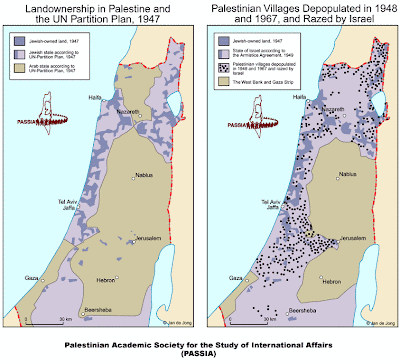Palestine Peace Not Apartheid (2)
By Jimmy Carter
Read the first part of this article here.

Palestinian villages and Zionist colonists in Palestine at the beginning of the British Mandate, 1920. Click on the map to enlarge.
A succession of Turks, Kurds, and European Crusaders ruled Palestine until the Ottoman Turks incorporated Palestine into their empire in 1516. They were on the losing side in World War I, and France and Great Britain initially assumed authority over the various parts of the Middle East. The League of Nations assigned to Great Britain the supervision of the Mandate of Palestine, which we now know as the lands of Israel, the West Bank, Gaza, and Jordan. After Jordan was separated from the Mandate in 1922, the remaining territory between the Jordan River and the Mediterranean Sea became known as Palestine.
Although Christian and Muslim Arabs had continued to live in this same land since Roman times, they had no real commitment to establish a separate and independent nation. Their concern was with family and tribe and, for the Muslims, the broader world of Islam. Strong ideas of nationhood began to take shape among the Arabs only when they saw increasing numbers of Zionists immigrate to Palestine, buying tracts of land for permanent homes with the goal of establishing their own nation.
In 1947 the United Nations approved a partition plan for Palestine. A Jewish state was to include 55 percent of this territory, Jerusalem and Bethlehem were to be internationalized as holy sites, and the remainder of the land was to constitute an Arab state. The Jewish Agency (an official group that represented the Jewish community in Palestine to the British Mandate) and other Zionist representatives approved the plan, but Arab leaders were almost unanimous in their opposition. When Jews declared their independence as a nation, the Arabs attacked militarily but were defeated. The 1949 armistice demarcation lines became the borders of the new nation of Israel and were accepted by Israel and the United States, and recognized officially by the United Nations.

Zionist expansion and depopulating Palestine villages between 1948-1967. Click on the map to enlarge.
Israelis had taken 77 percent of the disputed land, and the Palestinians were left with two small separate areas, to be known as the West Bank (annexed by Jordan) and Gaza (administered by Egypt). Jews who lived within their new nation took the name Israelis, while Christian and Muslim Arabs in the Holy Land outside of Israel preferred to be known as Palestinians. The Palestinians' own most expansive definition includes "all those, and their descendants, who were residents of the land before 14 May 1948 (when Israel became a state]."

UN partition plan in 1947 vs. Rhodes Armistice Line in 1949. Click on the map to enlarge.
When Britain conducted a census in Palestine in 1922, there were about 84,000 Jews and 670,000 Arabs, of whom 71,000 were Christians. By the time the area was partitioned by the United Nations, these numbers had grown to about 600,000 Jews and 1.3 million Arabs, 10 percent of whom were Christians. During and after the 1948 war, about 420 Palestinian villages in the territory that became the State of Israel were destroyed and some 700,000 Palestinian residents fled or were driven out.
The Palestinians and individual Arab leaders continued their vehement objections to the increasing Israeli encroachment on what they considered to be their lands and rights. However, it was not until the announcement of Israel's plans to divert water from the Sea of Galilee and the Jordan River to irrigate western Israel and the Negev desert that the first summit meeting of Arab leaders took place early in 1964 and the Palestine Liberation Organization (PLO) was formally organized. The United Nations estimated that by this time there were 1.3 million Palestinian refugees, with one-fourth in Jordan, about 150,000 each in Lebanon and Syria, and most of the others in West Bank and Gaza refugee camps.
Palestine Peace Not Apartheid, page 56-58.
To be continued...
Pictures, maps and titles in this article are not from the book "Peace Not Apartheid".
No comments:
Post a Comment